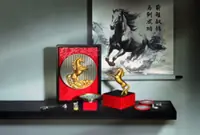The sunray finish is characterised by extremely fine lines running outwards from the centre of the dial’s surface. — Photos: Rolex
The aesthetic identity of a watch is a story weaved through every single part, skillfully put together by artisans well-versed in technical mastery.
A watch’s dial plays an essential role in conveying its distinctiveness, which is why Rolex performs its dial production in-house, mastering ancestral techniques and avant-garde technology.





